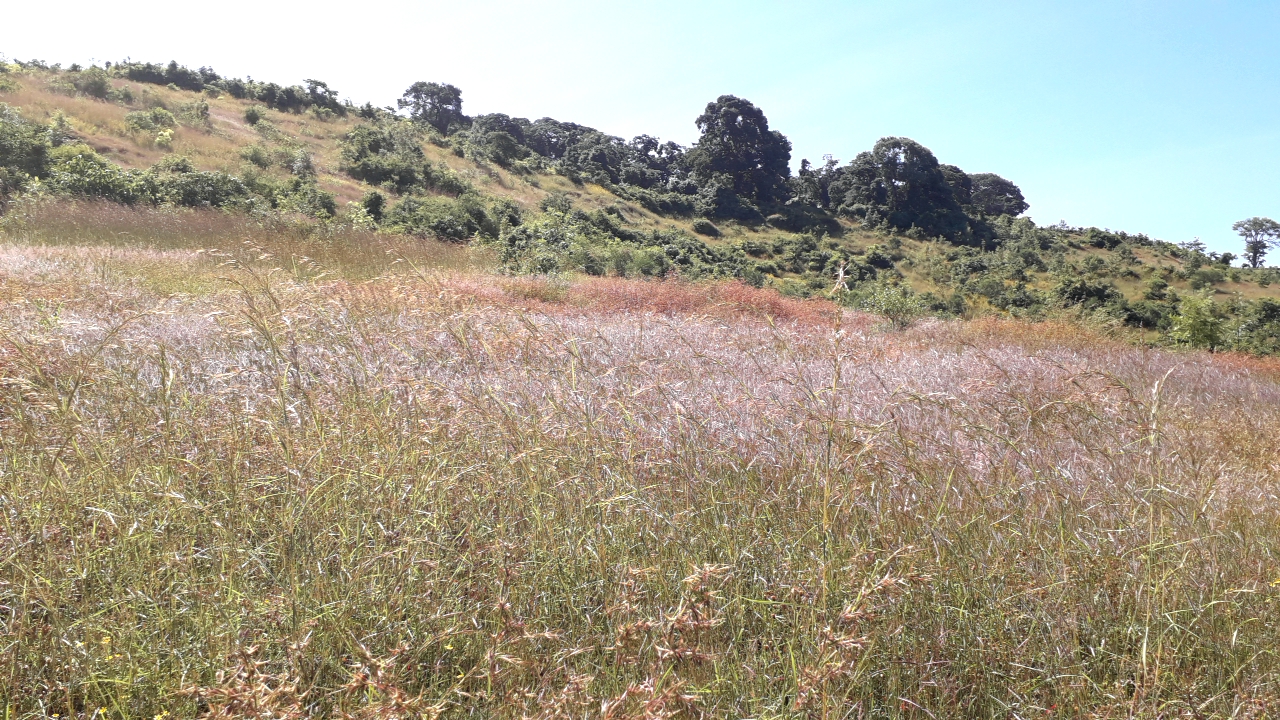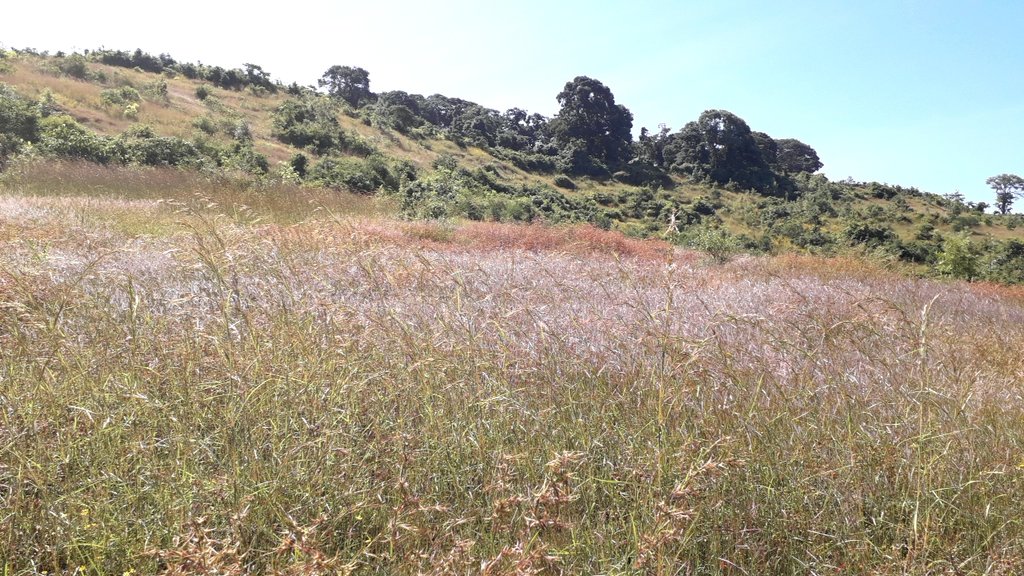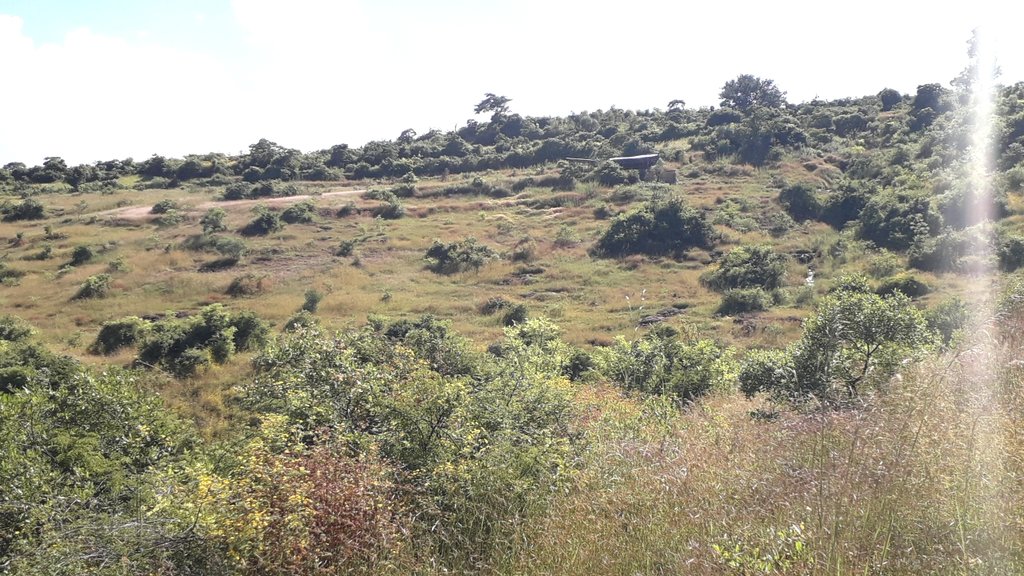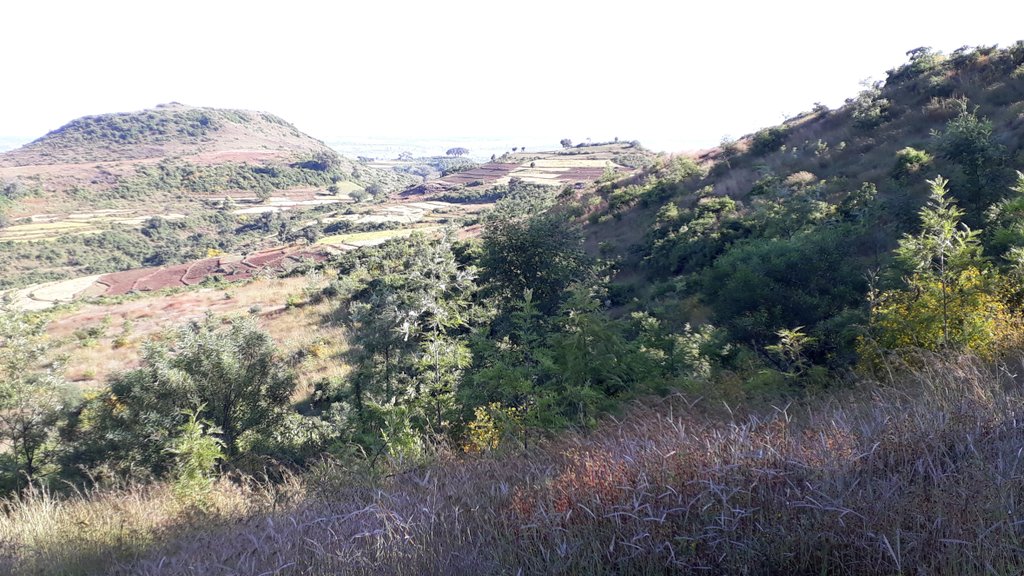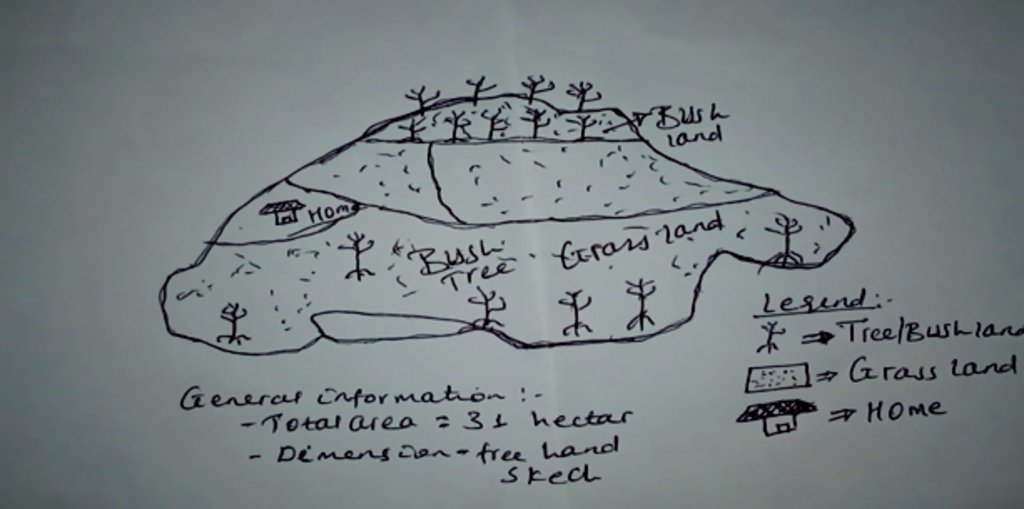Closed Area Management in Abagerima Learning Watershed [Ethiopia]
- Creation:
- Update:
- Compiler: Melese Bililign
- Editor: –
- Reviewer: Tatenda Lemann
Closed area management
technologies_4134 - Ethiopia
View sections
Expand all Collapse all1. General information
1.2 Contact details of resource persons and institutions involved in the assessment and documentation of the Technology
Name of project which facilitated the documentation/ evaluation of the Technology (if relevant)
Carbon Benefits Project (CBP)Name of the institution(s) which facilitated the documentation/ evaluation of the Technology (if relevant)
Water and Land Resource Centre (WLRC) - EthiopiaName of the institution(s) which facilitated the documentation/ evaluation of the Technology (if relevant)
CDE Centre for Development and Environment (CDE Centre for Development and Environment) - Switzerland1.3 Conditions regarding the use of data documented through WOCAT
The compiler and key resource person(s) accept the conditions regarding the use of data documented through WOCAT:
Ja
1.4 Declaration on sustainability of the described Technology
Is the Technology described here problematic with regard to land degradation, so that it cannot be declared a sustainable land management technology?
Nee
2. Description of the SLM Technology
2.1 Short description of the Technology
Definition of the Technology:
Closed area management is an area within a watershed into which human and livestock access is limited, and the area is left for natural recovery of vegetation and soil. Management relates to activities by the community to ensure such protection and to support regeneration, such as constructing drainage and retention structures, selective bush removal, regular grass cutting, occasional tree planting, and organisation of economic activities like grass cutting.
2.2 Detailed description of the Technology
Description:
1. The closed area management technology is applied within Abagerima Learning Watershed of the Water and Land Resource Centre project.
2. In the area closures, community-based participatory management is applied to recover degraded areas.
3. The area is closed from agricultural activities and livestock grazing, while water harvesting and drainage structures are constructed, like small trenches and cut-off drains.
4. Natural grasses are regularly cut and carried, and selective trees are planted.
5. Forage growth for animal feed is encouraged, thereby reducing soil erosion, storing water, reducing soil loss, and avoiding conflicts with down-stream users.
6. The community is committed and responsible for closed area management, such as construction of trenches for water drainage and harvesting, plantation of trees, and to reduce soil erosion. The communities of the Abagerima Learning Watershed are very happy to manage their closed areas and equally share the grass biomass, and later on selective trees.
7. As a consequence, forage biomass has been increasing over the past 6 years and is regularly cut and carried, while indigenous and introduced trees are growing.
8. Through these activities, heavily degraded and overgrazed land could be transformed into productive land.
2.3 Photos of the Technology
General remarks regarding photos:
The photos were all taken during field work on 24 October 2018, while several technologies were assessed by different compilers. In the Abagerima area a full watershed was developed in 2013 by the Water and Land Resource Centre, Addis Ababa University and Centre for Development and Environment (CDE), University of Bern, funded by Swiss Development Cooperation and its Ethiopian partners.
2.5 Country/ region/ locations where the Technology has been applied and which are covered by this assessment
Country:
Ethiopia
Region/ State/ Province:
Amhara Region, West Gojam Zone, Bahir Dar Zurya
Further specification of location:
the area is near Bahir Dar regional capital
Specify the spread of the Technology:
- evenly spread over an area
If the Technology is evenly spread over an area, specify area covered (in km2):
0.306
If precise area is not known, indicate approximate area covered:
- 0.1-1 km2
Is/are the technology site(s) located in a permanently protected area?
Nee
Map
×2.6 Date of implementation
Indicate year of implementation:
2012
If precise year is not known, indicate approximate date:
- less than 10 years ago (recently)
2.7 Introduction of the Technology
Specify how the Technology was introduced:
- through projects/ external interventions
Comments (type of project, etc.):
The Water and Land Resource Centre was highly involved in this area as one of its Learning Watersheds, and area closure was an element integrated into the landscape to protect and managed the area by using cut & carry system.
3. Classification of the SLM Technology
3.1 Main purpose(s) of the Technology
- improve production
- reduce, prevent, restore land degradation
- conserve ecosystem
- protect a watershed/ downstream areas – in combination with other Technologies
- preserve/ improve biodiversity
- create beneficial economic impact
- create beneficial social impact
3.2 Current land use type(s) where the Technology is applied
Land use mixed within the same land unit:
Ja
Specify mixed land use (crops/ grazing/ trees):
- Agroforestry

Grazing land
Intensive grazing/ fodder production:
- Cut-and-carry/ zero grazing
Animal type:
- cattle - dairy
- cattle - non-dairy beef
- cattle - non-dairy working
- goats
- horses
- mules and asses
- poultry
- sheep
- Cattle (differentiation between different types of cattles is difficult)
Is integrated crop-livestock management practiced?
Ja
If yes, specify:
trees like Cordia African,Crtonemacrotathes, Vices Vasta, Gravilia Robusta. crops like ; Maize, Teff, Figer milat, Mango, Avocado, coffee, Rhahimes(gesho). pegenpea, saspania,Napire grass, Local grass.
Products and services:
- meat
- milk
- skins/ hides
- transport/ draught
Species:
cattle - non-dairy beef
Count:
1656
Species:
sheep
Count:
284
Species:
goats
Count:
186
Species:
horses
Count:
30
Species:
mules and asses
Count:
605

Forest/ woodlands
Type of tree:
- Acacia senegal
- Grevillea robusta
Are the trees specified above deciduous or evergreen?
- mixed deciduous/ evergreen
Products and services:
- Fuelwood
- Nature conservation/ protection
Comments:
Livestock population:
Because it is not possible to list more than 5 different livestock for its "populations" the population of poultry is missing (1539 chicken)
3.3 Has land use changed due to the implementation of the Technology?
Has land use changed due to the implementation of the Technology?
- Yes (Please fill out the questions below with regard to the land use before implementation of the Technology)
Land use mixed within the same land unit:
Ja
Specify mixed land use (crops/ grazing/ trees):
- Agroforestry

Grazing land
Extensive grazing:
- Ranching
Animal type:
- cattle - dairy
- cattle - non-dairy beef
- cattle - non-dairy working
- goats
- horses
- mules and asses
- poultry
- sheep
Is integrated crop-livestock management practiced?
Ja
If yes, specify:
trees like Cordia African,Crtonemacrotathes, Vices Vasta, Gravilia Robusta. crops like ; Maize, Teff, Figer milat, Mango, Avocado, coffee, Rhahimes(gesho). pegenpea, saspania,Napire grass, Local grass.
3.4 Water supply
Water supply for the land on which the Technology is applied:
- rainfed
3.5 SLM group to which the Technology belongs
- agroforestry
- area closure (stop use, support restoration)
3.6 SLM measures comprising the Technology

vegetative measures
- V1: Tree and shrub cover
- V2: Grasses and perennial herbaceous plants

structural measures
- S3: Graded ditches, channels, waterways
- S4: Level ditches, pits

management measures
- M2: Change of management/ intensity level
- M3: Layout according to natural and human environment
3.7 Main types of land degradation addressed by the Technology

soil erosion by water
- Wt: loss of topsoil/ surface erosion

physical soil deterioration
- Pc: compaction

biological degradation
- Bc: reduction of vegetation cover
- Bh: loss of habitats
- Bq: quantity/ biomass decline
- Bs: quality and species composition/ diversity decline
- Bl: loss of soil life

water degradation
- Hs: change in quantity of surface water
3.8 Prevention, reduction, or restoration of land degradation
Specify the goal of the Technology with regard to land degradation:
- prevent land degradation
- restore/ rehabilitate severely degraded land
4. Technical specifications, implementation activities, inputs, and costs
4.1 Technical drawing of the Technology
Technical specifications (related to technical drawing):
The drawing is a free-hand sketch of the area closure near Laguna Giyorgis Church in Abagerima Learning Watershed.
The boarder of the closed area consists of cut off drains, forests, roads and croplands.
Author:
Melese Blilign, Bekalu Bitew
Date:
24/10/2018
4.2 General information regarding the calculation of inputs and costs
Specify how costs and inputs were calculated:
- per Technology area
Indicate size and area unit:
31 ha
Specify currency used for cost calculations:
- USD
Indicate average wage cost of hired labour per day:
3.7
4.3 Establishment activities
| Activity | Timing (season) | |
|---|---|---|
| 1. | survey | October (end of rainy season) |
| 2. | planning & community awareness | October |
| 3. | preparing materials | October |
| 4. | design & layout | November |
| 5. | implementation | December (beginning of dry season) |
Comments:
Community awareness was raised by frequent visits of different stakeholders to Abagerima Learning Watershed.
4.4 Costs and inputs needed for establishment
| Specify input | Unit | Quantity | Costs per Unit | Total costs per input | % of costs borne by land users | |
|---|---|---|---|---|---|---|
| Labour | construction of trenches | person-days | 210.0 | 3.7 | 777.0 | 0.0 |
| Labour | pit preparation for tree planting | numbers | 90.0 | 1.5 | 135.0 | 0.0 |
| Equipment | hand tools | numbers | 240.0 | 2.8 | 672.0 | 0.0 |
| Plant material | tree seedlings | numbers | 106.0 | 1.5 | 159.0 | 50.0 |
| Plant material | grass and legume seeds | kg | 200.0 | 22.0 | 4400.0 | 50.0 |
| Total costs for establishment of the Technology | 6143.0 | |||||
| Total costs for establishment of the Technology in USD | 6143.0 | |||||
If land user bore less than 100% of costs, indicate who covered the remaining costs:
Water and Land Resource Centre (WLRC), Agricultural Office and in the Abagerima watershed the communities are involved in all types of SLM activities
4.5 Maintenance/ recurrent activities
| Activity | Timing/ frequency | |
|---|---|---|
| 1. | grass cutting | once per year |
| 2. | bush clearing | irregular |
4.6 Costs and inputs needed for maintenance/ recurrent activities (per year)
| Specify input | Unit | Quantity | Costs per Unit | Total costs per input | % of costs borne by land users | |
|---|---|---|---|---|---|---|
| Labour | grass cutting | person-days | 150.0 | 3.7 | 555.0 | 100.0 |
| Labour | bush clearing | person-days | 20.0 | 3.7 | 74.0 | 100.0 |
| Total costs for maintenance of the Technology | 629.0 | |||||
| Total costs for maintenance of the Technology in USD | 629.0 | |||||
4.7 Most important factors affecting the costs
Describe the most determinate factors affecting the costs:
Establishment of the technology at the initial stage (digging of trenches, cut-off drains and waterways) causes high costs.
5. Natural and human environment
5.1 Climate
Annual rainfall
- < 250 mm
- 251-500 mm
- 501-750 mm
- 751-1,000 mm
- 1,001-1,500 mm
- 1,501-2,000 mm
- 2,001-3,000 mm
- 3,001-4,000 mm
- > 4,000 mm
Specify average annual rainfall (if known), in mm:
1350.00
Indicate the name of the reference meteorological station considered:
Abagerima Learning Watershed meteo station
Agro-climatic zone
- sub-humid
5.2 Topography
Slopes on average:
- flat (0-2%)
- gentle (3-5%)
- moderate (6-10%)
- rolling (11-15%)
- hilly (16-30%)
- steep (31-60%)
- very steep (>60%)
Landforms:
- plateau/plains
- ridges
- mountain slopes
- hill slopes
- footslopes
- valley floors
Altitudinal zone:
- 0-100 m a.s.l.
- 101-500 m a.s.l.
- 501-1,000 m a.s.l.
- 1,001-1,500 m a.s.l.
- 1,501-2,000 m a.s.l.
- 2,001-2,500 m a.s.l.
- 2,501-3,000 m a.s.l.
- 3,001-4,000 m a.s.l.
- > 4,000 m a.s.l.
Indicate if the Technology is specifically applied in:
- not relevant
5.3 Soils
Soil depth on average:
- very shallow (0-20 cm)
- shallow (21-50 cm)
- moderately deep (51-80 cm)
- deep (81-120 cm)
- very deep (> 120 cm)
Soil texture (topsoil):
- coarse/ light (sandy)
- medium (loamy, silty)
Soil texture (> 20 cm below surface):
- coarse/ light (sandy)
Topsoil organic matter:
- medium (1-3%)
- low (<1%)
5.4 Water availability and quality
Ground water table:
5-50 m
Availability of surface water:
good
Water quality (untreated):
poor drinking water (treatment required)
Water quality refers to:
both ground and surface water
Is water salinity a problem?
Nee
Is flooding of the area occurring?
Nee
Comments and further specifications on water quality and quantity:
Both surface & ground water availabilities are small in March & April at the end of the dry season.
5.5 Biodiversity
Species diversity:
- medium
Habitat diversity:
- low
5.6 Characteristics of land users applying the Technology
Sedentary or nomadic:
- Sedentary
Market orientation of production system:
- mixed (subsistence/ commercial)
Off-farm income:
- less than 10% of all income
Relative level of wealth:
- average
Individuals or groups:
- groups/ community
Level of mechanization:
- manual work
Gender:
- women
- men
Age of land users:
- youth
- middle-aged
5.7 Average area of land used by land users applying the Technology
- < 0.5 ha
- 0.5-1 ha
- 1-2 ha
- 2-5 ha
- 5-15 ha
- 15-50 ha
- 50-100 ha
- 100-500 ha
- 500-1,000 ha
- 1,000-10,000 ha
- > 10,000 ha
Is this considered small-, medium- or large-scale (referring to local context)?
- small-scale
Comments:
The area of land ownership is of less than 1 ha for the majority, but few people have up to 2 ha of cultivated land.
5.8 Land ownership, land use rights, and water use rights
Land ownership:
- communal/ village
- individual, titled
Land use rights:
- communal (organized)
- individual
Water use rights:
- open access (unorganized)
- individual
5.9 Access to services and infrastructure
health:
- poor
- moderate
- good
education:
- poor
- moderate
- good
technical assistance:
- poor
- moderate
- good
employment (e.g. off-farm):
- poor
- moderate
- good
markets:
- poor
- moderate
- good
energy:
- poor
- moderate
- good
roads and transport:
- poor
- moderate
- good
drinking water and sanitation:
- poor
- moderate
- good
financial services:
- poor
- moderate
- good
6. Impacts and concluding statements
6.1 On-site impacts the Technology has shown
Socio-economic impacts
Production
crop production
crop quality
fodder production
fodder quality
animal production
wood production
forest/ woodland quality
non-wood forest production
product diversity
production area
land management
energy generation
Water availability and quality
drinking water availability
drinking water quality
water availability for livestock
water quality for livestock
irrigation water availability
irrigation water quality
demand for irrigation water
Income and costs
farm income
diversity of income sources
economic disparities
workload
Socio-cultural impacts
food security/ self-sufficiency
health situation
land use/ water rights
cultural opportunities
recreational opportunities
community institutions
national institutions
SLM/ land degradation knowledge
conflict mitigation
situation of socially and economically disadvantaged groups
Ecological impacts
Water cycle/ runoff
water quantity
water quality
harvesting/ collection of water
surface runoff
excess water drainage
groundwater table/ aquifer
evaporation
Soil
soil moisture
soil cover
soil loss
soil accumulation
soil crusting/ sealing
soil compaction
nutrient cycling/ recharge
salinity
soil organic matter/ below ground C
acidity
Biodiversity: vegetation, animals
Vegetation cover
biomass/ above ground C
plant diversity
invasive alien species
animal diversity
beneficial species
habitat diversity
pest/ disease control
Climate and disaster risk reduction
flood impacts
landslides/ debris flows
drought impacts
impacts of cyclones, rain storms
emission of carbon and greenhouse gases
fire risk
wind velocity
micro-climate
6.2 Off-site impacts the Technology has shown
water availability
reliable and stable stream flows in dry season
downstream flooding
downstream siltation
groundwater/ river pollution
buffering/ filtering capacity
wind transported sediments
damage on neighbours' fields
damage on public/ private infrastructure
impact of greenhouse gases
6.3 Exposure and sensitivity of the Technology to gradual climate change and climate-related extremes/ disasters (as perceived by land users)
Gradual climate change
Gradual climate change
| Season | increase or decrease | How does the Technology cope with it? | |
|---|---|---|---|
| annual temperature | increase | very well | |
| seasonal temperature | winter | increase | very well |
| annual rainfall | very well |
Climate-related extremes (disasters)
Meteorological disasters
| How does the Technology cope with it? | |
|---|---|
| local rainstorm | very well |
| local thunderstorm | very well |
Biological disasters
| How does the Technology cope with it? | |
|---|---|
| epidemic diseases | very well |
| insect/ worm infestation | very well |
6.4 Cost-benefit analysis
How do the benefits compare with the establishment costs (from land users’ perspective)?
Short-term returns:
positive
Long-term returns:
very positive
How do the benefits compare with the maintenance/ recurrent costs (from land users' perspective)?
Short-term returns:
slightly positive
Long-term returns:
very positive
6.5 Adoption of the Technology
- > 50%
If available, quantify (no. of households and/ or area covered):
400-480 households
Of all those who have adopted the Technology, how many did so spontaneously, i.e. without receiving any material incentives/ payments?
- 11-50%
Comments:
The community got a technical adviser plus small material incentives, while there was high mobilization for SWC work.
6.6 Adaptation
Has the Technology been modified recently to adapt to changing conditions?
Nee
6.7 Strengths/ advantages/ opportunities of the Technology
| Strengths/ advantages/ opportunities in the land user’s view |
|---|
|
Grass biomass increased, run off to foot slope of cultivated land decreased, water availability increased and conflicts resolved. Closed area is also used as a home for wild animals. |
| Strengths/ advantages/ opportunities in the compiler’s or other key resource person’s view |
|---|
| Areas are giving high forage biomass for animals. |
| Restoring the water & the vegetation cover are fine. |
| Generally the closed areas improve the livelihoods of the community due to its economical, social & environmental advantages. |
6.8 Weaknesses/ disadvantages/ risks of the Technology and ways of overcoming them
| Weaknesses/ disadvantages/ risks in the land user’s view | How can they be overcome? |
|---|---|
| Older people complain that animals should still be allowed to openly graze. | Give continuous service for the community. |
| Trees are not fully adapt to climate, environment and use. | Select appropriate technology; reintroduce moisture harvesting structures (hillside terraces) |
| Resource allocation | Raise external support for the Learning watershed |
| Weaknesses/ disadvantages/ risks in the compiler’s or other key resource person’s view | How can they be overcome? |
|---|---|
| Resources allocation & sharing of benefits | Needs to be organized by group & clear bylaws for better management & sharing of resources |
7. References and links
7.1 Methods/ sources of information
- field visits, field surveys
The compiler himself is the technician assigned to the Learning Watershed, and has been working in the area for several years. Furthermore, he is currently doing field work for his master's thesis in the area.
- interviews with land users
numerous interviews in the past
- interviews with SLM specialists/ experts
the compiler's colleague assisted him in compiling the information according to the QT.
When were the data compiled (in the field)?
24/10/2018
7.2 References to available publications
Title, author, year, ISBN:
none
7.3 Links to relevant online information
Title/ description:
none
7.4 General comments
The WOCAT QT is an interesting database & very simple questionniare for a SLM technician.
Links and modules
Expand all Collapse allLinks
No links
Modules
No modules


